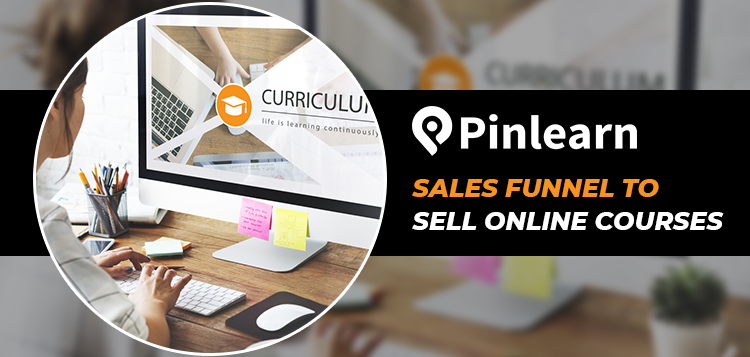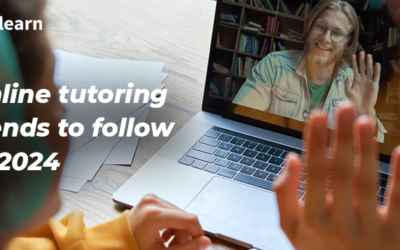How to Build a Sales Funnel for Online Courses to Sell
The term “sales funnel” isn’t just a fancy term used by upscale marketers, salespeople, or website owners to promote their sites. It does exist, and you can use it to its fullest advantage to enroll students in your online course.
Online courses are simple to produce if you have the right knowledge and experience, and they bring in a lot of revenue. But only if you can sell them successfully to your prospects.
That is where the relevance of a sales funnel for online courses comes into play.
What is a sales funnel?
The sales landscape is constantly evolving, but the sales funnel hasn’t.
The course buyer journey doesn’t follow a straight way from interest in the course to purchase.
In reality, people take a lot of detours.
The online course funnel is the conceptual journey potential buyers go through when they take an interest in your online course. The journey comprises a funnel of steps that your sales team leverages to convert your prospects to your course-buying customers.
To put the sales funnel in simple definition:
A sales funnel for an online course starts with potential buyers and comes down to a smaller group.
Often, the customer journey for a funnel starts with a free or low-cost offer like a free gift, a webinar, or a community membership.
Then, qualified buyers move through the funnel and eventually buy your online course.
The sales funnel is ideal for demonstrating the entire process, from a website visitor’s first interest to the delivery of a product to a customer.
Your traffic is at the top of the funnel. These are the people who visit your online course-selling website or landing pages. This can happen on its own through organic traffic or through paid traffic. Website traffic is the starting point of your sales funnel.
Action plan to build sales funnel
Here is the overview of the different steps you need to follow when building your sales funnel:
Awareness: Create a Facebook ad to drive people to your online course.
Interest: Offer valuable content in exchange for lead capture.
Decision: Your content educates your target audience and prepares them for buying your online course.
Action: Give an offer that your leads cannot resist and start promoting to them again to boost retention rate and finally convert.
Building Sales Funnel for Online Course
You can create an online course, sell it online, and make thousands or even millions of dollars.
But how do you sell it? That’s what we are going to look at.
We will show you how to build a successful sales funnel for online courses.
Start by studying your target market
A lot of course creators make the mistake of starting their online courses first. Instead, begin with whom you are going to sell to.
Identify and study your target market, which must be your first step.
Create your target audience persona. Who are your ideal clients? What are their interests and passions? What are their fears and worries, and what do they want to achieve from their online course?
So, how do you find your target audience?
Finding the right audience for your online course is the most important part, and it starts with researching the market.
-
First, Google your online course topic and related words and phrases
What websites are coming up?
What similarities that are you seeing?
Is there a specific group of people interested in your course topic?
Bonus tip: Check out Quora and search for questions people are asking about your online course topic and dig into their profiles.
What are the other topics they are interested in? Where else do they spend their time?
-
Find similarities in your target audience
After finding your target audience, try finding similarities in them.
Ask these questions to find similarities in your target audience:
-
- Is your audience located in a specific country or countries?
- What languages do they speak?
- What are their gender and demographic?
- What are their education levels?
- What are the other identifying characters or similarities in the group?
-
Find your audience on existing platforms
Now, this is the easiest way to find your online course organically.
-
- Promote your online course on social media websites like Facebook, Instagram, and Twitter.
- Create videos on YouTube to drive viewers back to your online course.
- Go to Q&A forums like Quora and, provide value with your answer and link back to your online course.
-
Leverage Facebook groups
You can also rely on Facebook groups to build an organic following of people who will be interested in your online course.
Create compelling content (That addresses a problem)
Once you find your target audience and know more about them, you need to gain their confidence and establish yourself as an authority. The best way to do this is to offer value and assist them in solving a specific challenge. This could be through video tutorials, blogs, or podcasts.
Build a landing page
Create a dedicated landing page for your course. This page should be designed to convert visitors into leads. Include persuasive copy, testimonials (if available), and a clear call-to-action (CTA).
Having your own website helps you build a landing page of your own in your design with full control over the content and other factors.
Provide lead magnets
Once your target audience becomes familiar with your services, urge them to explore more. Not everyone who views your material will enroll in your online course.
How do you find the users most likely to enroll in your courses?
You can do that with the help of lead magnets.
In most sales funnels for online courses, this is the first step. In return, you supply your target audience with enticing value material for their contact details.
You must nurture them once they subscribe to your email list. Make sure you target them using retargeting ads and follow-up email series if they drop off your online course sales funnel.
Here are the freebies you can use as lead magnets:
- Google spreadsheets.
- Downloadable templates.
- Tutorial videos.
- Interactive quizzes.
- Short eBooks.
- Case studies that are relevant and helpful.
Start with a drip campaign
Now that you have a chance to build a personal relationship with your prospects make them offers they can’t resist.
Send automated email follow-up series, which begins with a welcome email immediately after they subscribe to your list.
Introduce yourself to your audience, include a link to download the free resources you have promised them, and invite them to communicate with you through emails or social media.
Send follow-up emails created for your target audience.
For example, write 7 follow-up emails and set your autoresponder series to send one email every day for the next 7 days to every new subscriber.
Automating emails ensures that your email subscribers receive the same emails in the same order and at the same time.
Track non-buyers and connect with them
Not everyone invited to your online course will purchase your course, and that’s alright.
But what to do next?
The best thing you can do is to ask them directly why they have enrolled in your online course.
Some people will directly tell you that they don’t want to get emails from you. But others might communicate with you more regarding important things before buying. For example, some might ask you more questions related to your online course, like how it could benefit them.
Through this conversation, you will be able to find out what keeps you from enrolling in your online course so that you can try converting them to your buyers with the necessary actions.
Don’t neglect post-purchase engagement
After a successful purchase, direct customers to a thank you page and send a confirmation email with access instructions. Ensure your customers have a positive experience. Address any questions or concerns promptly.
Even after they complete your online course, engage with them through email newsletters, exclusive content, or a community platform (e.g., forum, Facebook group).
Try encouraging satisfied customers to leave reviews or testimonials. Display these on your sales pages to build trust.
Conclusion
So there you have it: how to build an online course sales funnel.
Focus on building the right online course funnel and getting the steps right. It is always the simplicity that you need to maintain rather than the complexity. Once you start seeing great results, add layers to upsell or sell multiple-tiered online courses.
You must also test different approaches, modify your sales funnel and finally measure the results. Yes, do not miss this step. Do not expect your sales funnel to be really great on the first try, but constantly measure so that it keeps improving




